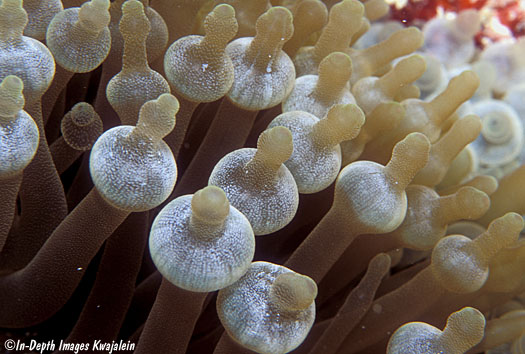
Entacmaea quadricolor comes in a couple of forms. Larger solitary anemones are typically brown (rarely reddish) and often have these bulbs at the ends of their tentacles. These anemones are usually found on shallow lagoon reefs and lagoon slopes, and sometimes relatively deep on the steep seaward slopes. The solitary anemones are usually occupied by a pair of Amphiprion tricinctus. The other form is usually smaller, often without the tentacle bulbs, and forms colonies on shallow lagoon, pinnacle, and seaward reefs. The colonial clusters of anemones are usually occupied by multiple Amphiprion melanopus, as in the second and third photos below.

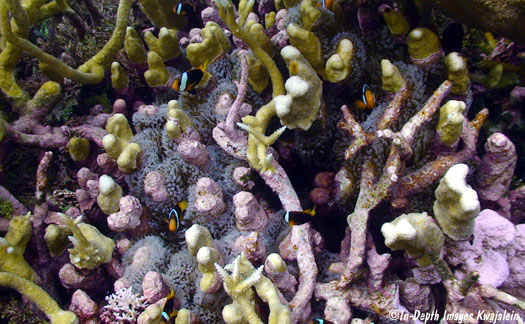
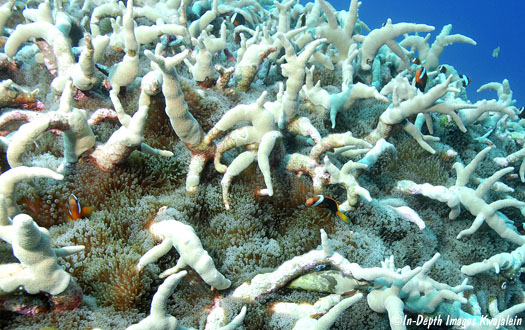
During the El Niño of 2009, the water temperature rose to about one degree F warmer than normal, peaking out at 86F (30C) in October and November. During those two months, some corals and anemones, including the Entacmaea quadricolor in the two photos below, expelled their symbiotic zooxanthellae and bleached out. Most anemones appeared to survive the bleaching; some of the corals did not. Subsequent bleaching events occurred in 2013, 2014, 2016 and 2018. This series of serious events, when no bleaching had been noticed at Kwajalein prior to 2009, has had a serious impact on the corals and anemones.
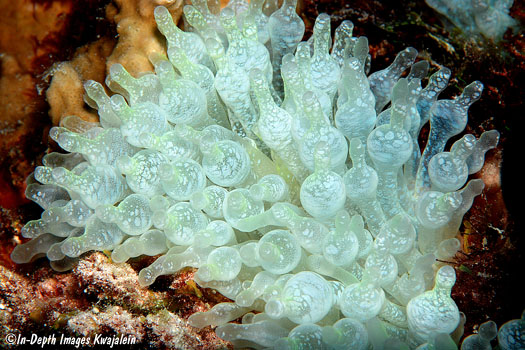
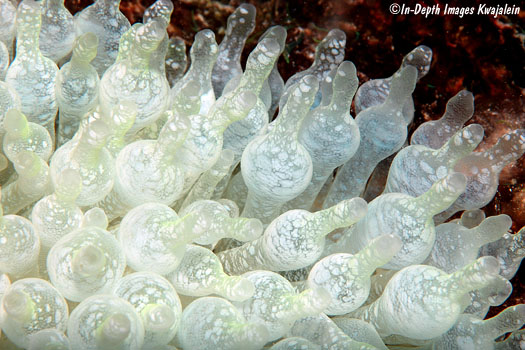
Created 1 September 2010
Updated 16 March 2017